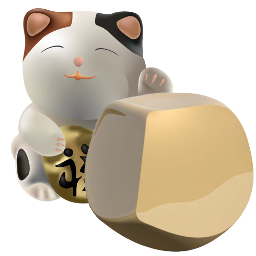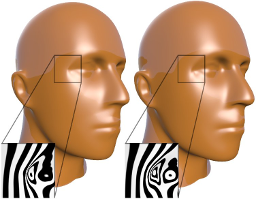Simon Boyé
- [
- en
- fr ]
My passion for computer graphics led me to do a master
followed by a PhD at Inria Bordeaux. Here, under the supervision of
Gaël Guennebaud and
Pascal Barla I worked on smooth
surface representations and on
Later I worked for The Foundry where I developped an Illustrator-like toolset to manipulate vector graphics directly on the surface of polygonal meshes.
On my free time, I like to experiment with new programming languages and to develop small video games. I'm working on a small game engine, Lair, and use it regularly to participate to the Ludum Dare. You can see some of my modest contribution here.
Publications

- Title
- Représentation hybride pour la modélisation géométrique interactive
- Authors
- Detail
- PhD. Université Sciences et Technologies - Bordeaux I, 2012. French
- Abstract
- Nowadays, virtual objects have become omnipresent. We can find them in various domains such as entertainment (movies, video games, etc.), computer-aided design or virtual reality. Our main focus in this document is the modeling of 3D objects in the domain of artistic creation, where rich images creation requires highly detailed and complex models. Subdivision surfaces, the most used surface representation in this domain, quickly become very dense as the user add details, and manual handling of the connectivity becomes too cumbersome. A standard approach to handle the complexity of such models is to separate the overall shape of the surface and the details. Although, these detail maps are often stored in bitmap images that does not provide the advantages of vectorial representation, which complicate some tasks, like animation. In this document, we present two new vectorial representations: the first one for the base surface, the second one for the detail maps. For the later, we use a vectorial representation called diffusion images that allow to create smooth or sharp variations from a small set of constraints. This enables us to represent geometry as well as color or any other parameter required for rendering, while keeping high-level controls. Our first contribution is a surface representation, called LS3, based on the combination of subdivision surfaces and point set surfaces. This approach reduces notably artifacts that subdivision surfaces produce around so called extraordinary vertices. We also present a numerical analysis of the mathematical properties of these surfaces, that show that they behave at least as well as classical subdivision schemes. Our second contribution is a solver for diffusion images that has the particularity to produce as output a denser vectorial representation which is light and fast to evaluate. We show the advantages of this approach on several examples that would be hard or impossible to produce with former methods. To conclude, we show how these two contributions can be used together to obtain a fully vectorial surface representation able to produce detailed surfaces without needing to deal with complex connectivity.
- Actions
- [pdf] [bibtex]
@phdthesis{boye:tel-00767367, TITLE = {{Hybrid representation for interactive geometric modeling}}, AUTHOR = {Boy{'e}, Simon},v URL = {https://tel.archives-ouvertes.fr/tel-00767367}, SCHOOL = {{Universit{'e} Sciences et Technologies - Bordeaux I}}, YEAR = {2012}, MONTH = Dec, KEYWORDS = {Geometric modeling ; Subdivision surfaces ; Vector graphics ; Mod{'e}lisation g{'e}om{'e}trique ; Surfaces de subdivision ; Dessin vectoriel}, TYPE = {Theses}, HAL_ID = {tel-00767367}, HAL_VERSION = {v1}, }

- Title
- A Vectorial Solver for Free-form Vector Gradient
- Authors
- Detail
ACM Transaction on Graphics , ACM, 2012, Proceedings of Siggraph Asia 2012- Abstract
- The creation of free-form vector drawings as been greatly improved in recent years with techniques based on harmonic or bi-harmonic interpolation. Such methods offer the best trade-off between sparsity (keeping the number of control points small) and expressivity (achieving complex shapes and gradients). Unfortunately, the lack of a robust and versatile method to compute such images still limits their use in real-world applications. In this paper, we introduce a vectorial solver for the computation of free-form vector gradients. Based on Finite Element Methods (FEM), its key feature is to output a low-level vector representation suitable for very fast GPU accelerated rasterization and close-form evaluation. This intermediate representation is hidden from the user: it is dynamically updated using FEM during drawing when control points are edited. Since it is output-insensitive, our approach enables novel possibilities for (bi)-harmonic vector drawings such as instancing, layering, deformation, texture and environment mapping. Finally, in this paper we also generalize and extend the set of drawing possibilities. In particular, we show how to locally control vector gradients.
- Actions
- [pdf] [bibtex]
@article{boye:hal-00732992,\s TITLE = {{A Vectorial Solver for Free-form Vector Gradient}}, AUTHOR = {Boy{'e}, Simon and Barla, Pascal and Guennebaud, Gael}, URL = {https://hal.inria.fr/hal-00732992}, JOURNAL = {{ACM Transaction on Graphics}}, PUBLISHER = {{ACM}}, SERIES = {Proceedings of Siggraph Asia 2012}, YEAR = {2012}, MONTH = Nov, HAL_ID = {hal-00732992}, HAL_VERSION = {v2}, }

- Title
- Least Squares Subdivision Surfaces
- Authors
- Detail
Computer Graphics Forum (Proceedings of Pacific Graphics 2010) , Wiley-Blackwell, 2010, 29 (7)- Abstract
- The usual approach to design subdivision schemes for curves and surfaces basically consists in combining proper rules for regular configurations, with some specific heuristics to handle extraordinary vertices. In this paper, we introduce an alternative approach, called Least Squares Subdivision Surfaces (LS^3), where the key idea is to iteratively project each vertex onto a local approximation of the current polygonal mesh. While the resulting procedure have the same complexity as simpler subdivision schemes, our method offers much higher visual quality, especially in the vicinity of extraordinary vertices. Moreover, we show it can be easily generalized to support boundaries and creases. The fitting procedure allows for a local control of the surface from the normals, making LS^3 very well suited for interactive freeform modeling applications. We demonstrate our approach on diadic triangular and quadrangular refinement schemes, though it can be applied to any splitting strategies.
- Actions
- [pdf] [bibtex]
@article{boye:inria-00524555, TITLE = {{Least Squares Subdivision Surfaces}}, AUTHOR = {Boy{'e}, Simon and Guennebaud, Gael and Schlick, Christophe}, URL = {https://hal.inria.fr/inria-00524555}, JOURNAL = {{Computer Graphics Forum (Proceedings of Pacific Graphics 2010)}}, PUBLISHER = {{Wiley-Blackwell}}, VOLUME = {29}, NUMBER = {7}, YEAR = {2010}, MONTH = Nov, HAL_ID = {inria-00524555}, HAL_VERSION = {v1}, }